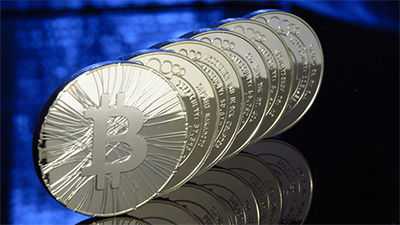The collapse of virtual currency exchange “FTX” was not an accident but a “crime”

by
FTX , a virtual currency exchange founded in 2019 by American entrepreneur Sam Bankman-Fried, filed for Chapter 11 bankruptcy protection on November 11, 2022, effectively going bankrupt. Did. The New York Times and the Wall Street Journal , which interviewed Mr. Bankman-Fried, reported this incident as an ``unfortunate accident,'' but in reality, the incident was clearly intended to steal users' funds. CoinDesk, a news site specializing in digital currencies, has accused it of being an unprecedented huge scam.
FTX's Collapse Was a Crime, Not an Accident
https://www.coindesk.com/layer2/2022/11/30/ftxs-collapse-was-a-crime-not-an-accident/
CoinDesk's article states, 'Since Sam Bankman-Fried's crypto empire was revealed to be a lie, major news outlets and commentators have made it clear to their readers that the whole story is clear. It begins with 'I have failed in receiving it.'
CoinDesk's evaluation is based on the fact that the New York Times and the Wall Street Journal have reported that ``FTX did not have a person in charge of customer position risk'' and ``FTX did not have a person in charge of handling customer position risks.'' While revealing important facts such as, 'We had no idea whether or not the bank had even held the FTX,' it also reported FTX's bankruptcy as if it were an accident similar to a bank run. Additionally, media outlets reported Bankman-Fried's self-defense, saying, ``There was no intent to commit fraud.''

However, unlike banks, which can run out of funds if customers withdraw their budgets all at once, even if they do not have long-term problems, FTX does not provide loans like banks, and virtual currency exchanges do not receive deposits from customers in the first place. You should not divert your funds to a third party. Nevertheless, shortly after the management problems came to light, FTX made an opaque transfer of funds to
From this point of view, CoinDesk views FTX's bankruptcy and the series of problems surrounding it as ``Simply put, this is an unprecedented theft incident'' and summarizes the reasons as follows.
◆Connection between FTX and Alameda
According to CoinDesk, the core of Bankman-Fried's fraud lies in the deep and close ties between FTX and Alameda. Both companies were founded mainly by Mr. Bankman-Fried, but while FTX profits from fees earned from customers' virtual currency transactions, Alameda, a hedge fund, actively invests in the funds it manages. The difference is that it is a company that earns profits by operating in a strategic manner.
Bankman-Fried describes the two companies as completely separate entities, and as if to emphasize that point, he stepped down as Alameda's CEO in 2019. But the two companies have a very close relationship , with executives from both companies often working out of the same penthouse in the Bahamas, and Bankman-Fried having a romantic relationship with Alameda CEO Caroline Ellison. There was a connection .

CoinDesk believes that this honeymoon relationship between FTX and Alameda enabled FTX to commit fraud. Specifically, in the days after the FTX issue surfaced, we moved a large amount of customer assets to Alameda. According to
So far, it is unclear how Bankman-Fried betrayed users' trust by sending their customers' funds to Alameda. On-chain analysis shows that most of the capital movement from FTX to Alameda occurred in the second half of 2021, and both companies posted losses of $3.7 billion (approximately 500 billion yen) in 2021. This is confirmed by the bankruptcy filing. This means that FTX and Alameda have lost huge amounts of money even before the cryptocurrency bear market began in 2022.
From this point of view, CoinDesk said, ``Long before the collapse of the virtual currency Terra and 3AC , the fund that invested in Terra , and the fatal injury of overleveraged virtual currency players, Mr. Bankman-Fried They may have been stealing money.'

◆Suspicion of FTX token and “secured loan”
In the first place, the relationship between FTX and Alameda began to attract attention when CoinDesk
Furthermore, FTX is believed to have used FTT, which was valued at a fictitious price, as 'collateral for financing between FTX and Alameda.' CoinDesk pointed out similarities between this method and the accounting fraud committed in the Enron scandal , which has been described as 'one of the largest scandals in American history.'

◆ Alameda's 'Secret Exemption'
When FTX went bankrupt, Mr. Bankman-Fried stepped down as CEO of the company, but due to legal documentation submitted by his successor's management team, Alameda was exempted from FTX's margin trading rules. It was revealed that he had been given special treatment by receiving 'secret immunity.'
FTX, like other virtual currency exchanges, offered users a margin service that could be used for trading. Under this system, users deposit legal currency or virtual currency as collateral when making leveraged transactions with virtual currency.If a large loss occurs in a margin transaction, FTX sells the collateral pledged by the user. You can make up for it.
The fact that Alameda was exempted from forfeiture of this margin gave Alameda a huge advantage, but put other FTX users at a significant disadvantage. This is because when a user incurs a loss in virtual currency trading, ordinary users lose their funds and have to withdraw, but Alameda can remain a loser until the situation improves. CoinDesk criticized the secret agreement between FTX and Alameda, which seriously undermines the fairness of the exchange, calling it ``criminal from every perspective.''

◆ Insider trading of FTX tokens by Alameda
According to
Although the tokens handled by FTX are not securities as defined in the Financial Act, this incident may lead to litigation under the Insider Trading Act. For example, in June 2022, an employee of NFT marketplace OpenSea was charged with insider trading for purchasing NFTs in advance.
◆ Huge loans to individual executives
FTX executives including Mr. Bankman-Fried received a total of $4.1 billion (approximately 550 billion yen) in loans from Alameda, many of which were unsecured. For example, Mr. Bankman-Fried received a $1 billion (approximately 130 billion yen) personal loan from Alameda, and an organization called Paper Bird, in which Bankman-Fried has 75% control, received a $2.3 billion (approximately 310 billion yen) loan. It was discovered in bankruptcy proceedings that the company had received a loan of ¥1,000.
Additionally, Nishad Singh, FTX's engineering director, received $543 million (approx. 74 billion yen), and Ryan Salameh, co-CEO of FTX Digital Markets, a subsidiary of FTX, received $55 million (approximately 75 billion yen). He received a personal loan of 100 million yen.
The use and fate of these loans are unknown, and an investigation into whether they are fraudulent is yet to begin, but CoinDesk reports that the flow of money is ``Mr. Bankman-Fried's use of secret capital circulation, leverage, and fictitious capital. 'This is certainly consistent with a broader pattern of fraudulently increasing the value of various assets.'

◆Possibility that Mr. Bankman-Fried's 'relief' was a cover-up for losses
In mid-2022, when the crypto market entered a bear market, Bankman-Fried offered to inject capital into the likes of bankrupt crypto lending giant BlockFi, and was hailed as a savior for the industry suffering from the crypto winter. Ta.
Bankman-Fried said: “We take seriously our obligation to protect the digital asset ecosystem and our customers.”
6) We take our duty seriously to protect the digital asset ecosystem and its customers.
— SBF (@SBF_FTX) June 21, 2022
However, it is now possible that the purpose was not actually to save the virtual currency industry. In an article published in November 2022, Bloomberg suggested that FTX may have supported BlockFi with fictitious funds. This is still speculation, but if BlockFi had gone bankrupt sooner, FTX and Alameda's debts to BlockFi would have come to light earlier, so Bankman-Fried's bailout may have been an attempt to hide losses. CoinDesk points out that there is no.
CoinDesk goes on to say that, based on these numerous suspicious points, ``Mr. Bankman-Fried's fraud, whether intentional or maliciously inadvertent, has similarities to scandals at large companies such as WorldCom and Enron. All of the main suspects have either been sentenced to prison or are on the run, and it would be appropriate for Mr. Bankman-Fried to share his fate with them.'
CoinDesk's parent company, Digital Currency Group (DCG), has suffered a loss of approximately $175 million (approximately 23,828 million yen) due to the bankruptcy of FTX, as revealed by DCG's subsidiary Genesis. It has been.
As part of our goal in providing transparency around this week's market events, the Genesis derivatives business currently has ~$175M in locked funds in our FTX trading account. This does not impact our market-making activities.
— Genesis (@GenesisTrading) November 10, 2022
Related Posts:
in Note, Posted by log1l_ks







